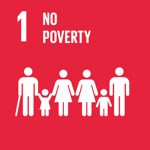Strategies for integrated management of black sigatoka in banana
 Costa Rica
Costa Rica
 Brazil
Brazil
 Colombia
Colombia
 Dominican Republic
Dominican Republic
 Ecuador
Ecuador
 France
France
 Mexico
Mexico
 Nicaragua
Nicaragua
 Panama
Panama
 Venezuela
Venezuela
Executive Summary
The control of black Sigatoka in banana crops was studied through four lines of work:
- High-density cultivation and use of fungicides. The higher density increased the height of the plants, lengthened the production cycle and contributed to weed control. Bunch weight was lower without affecting the number and size of fruits. Neither infection nor fungicide use increased with the higher density. Productivity and net profit increased.
- Practices to reduce internal inoculum and control disease. Stacking leaves with or without urea application after defoliation reduced infections but did not increase yield. However, it may be desirable in periods of increased disease pressure.
- Development of the disease and its relationship with climatic factors. The disease progression curve was determined for the design of measures such as sowing planning so that flowering and harvesting do not coincide with increased infection pressure. The incubation and latency period was highly variable and the determining factor was the relative humidity, linked to the seasonality of rainfall.
- Baseline of sensitivity to fungicides in Mycosphaerella fijiensis Resistant isolates were found in plantations in Costa Rica, Ecuador and Panama, related to a high use of fungicides. In Brazil and Nicaragua the use of fungicides is limited which explains the absence of resistant isolates.
The technological solution
The technological solution, tested at an experimental level, consisted of crop management practices, such as planting density, use of fungicides and sanitary leaf removal aimed at controlling the disease. These practices were evaluated in terms of the incidence of infections and the productivity of the plantations. The reference sector is that of small banana producers in the countries of the region. The benefits, when these practices are adopted, will be manifested as reductions in the incidence of disease outbreaks, greater productivity and lower economic and environmental costs due to the reduction in the use of fungicides.
Results
The four research lines of the project produced information on cultivation practices, such as planting density, leaf removal and leaf stacking and the use of fungicides and their effect on the epidemiology of Black Sigatoka, disease control and productivity of banana plantations. Information was also generated on the in vitro cultivation of Mycosphaerella fijiensis and the determination of its sensitivity to fungicides. In addition, the three training activities developed by the project broadened the participants' technical and scientific bases on banana cultivation and black Sigatoka.
Beneficiaries
The direct beneficiaries were research and extension institutions in the participating countries that increased their knowledge of Black Sigatoka epidemiology and methods of control of the disease. The project also provided the opportunity for the participation and training of university level students (Bachelor and Master). A total of 13 students joined the different research projects as thesis students and collaborated in the implementation of the activities, acquiring new skills that will later serve to technically support the banana producers, who will be the final beneficiaries of the project.
Sustainable Development Goals


Participating Organizations
Executor
- CORBANA - Costa Rica
Associated
- CEDAF - República Dominicana
- CIRAD - Francia
- Corporación Colombiana de Investigación Agropecuaria (CORPOICA) - Colombia
- Empresa Brasileña de Investigación Agropecuaria (EMBRAPA) - Brasil
- Fondo Nacional de Investigaciones Agropecuarias (FONAIAP) - Venezuela
- Instituto de Innovación Agropecuaria de Panamá (IDIAP) - Panamá
- Instituto Nacional de Investigaciones Agropecuarias (INIAP) - Ecuador
- International Network for the Improvement of Banana and Plantain (INIBAP) - Costa Rica
- INIFAP - México
- UNAN - Nicaragua




